French baguette, camel-calling: What’s new on the Unesco intangible cultural heritage list?
Sign up now: Get ST's newsletters delivered to your inbox
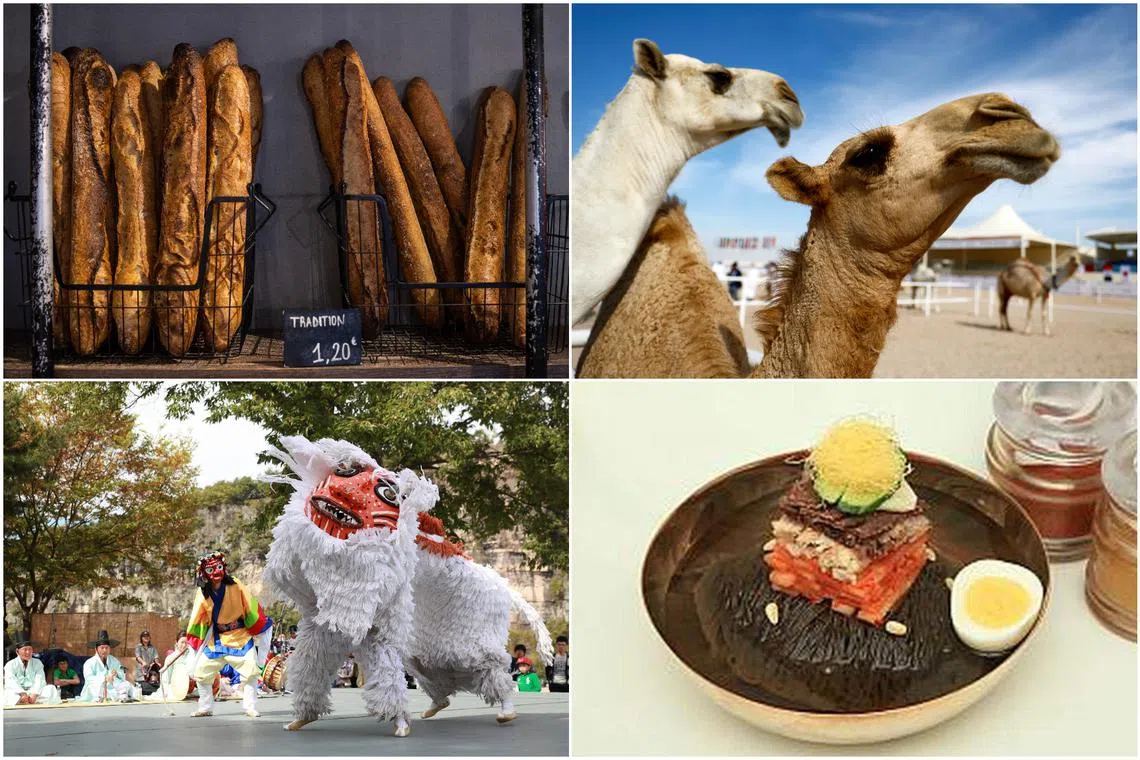
(Clockwise from top left) The baguette, camel-calling, Pyongyang Raengmyon and lion dance at the Bongsan Talchum are among the new additions.
PHOTOS: EPA-EFE, REUTERS, RYU TOK IN/NORTH KOREA, INTERNATIONAL MASK ARTS AND CULTURE ORGANISATION, SOUTH KOREA
Follow topic:
The United Nations’ cultural agency Unesco is meeting in Morocco from Nov 28 to Dec 3 to examine proposals for its list of intangible cultural heritage, which aims to protect cultural traditions, practices and knowledge.
It will consider 46 items submitted by countries across the world for inscription on the Representative List of the Intangible Cultural Heritage of Humanity; four items for the List of Intangible Cultural Heritage in Need of Urgent Safeguarding; five items for the Register of Good Safeguarding Practices; and one International Assistance request.
Here are some of the new additions to the intangible cultural heritage list announced so far this year:
Kun Lbokator, traditional martial art (Cambodia)
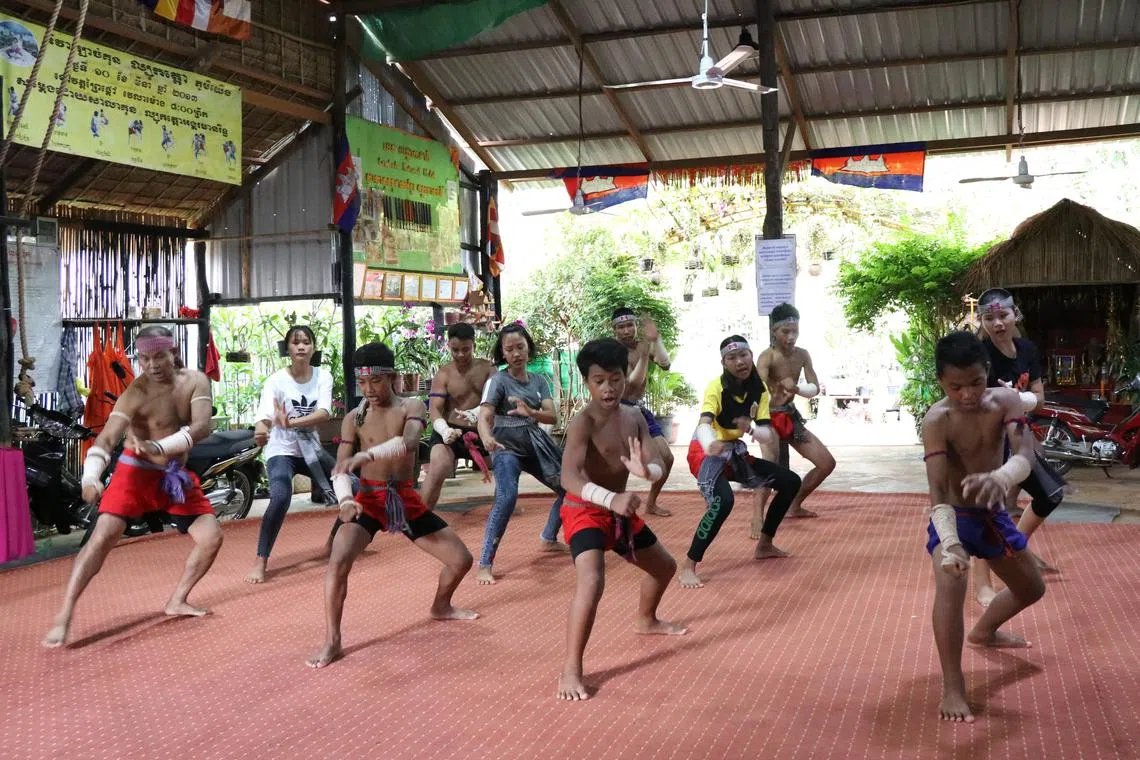
Training of Kun Lbokator at the Angkor Meanrith Club in Siem Reap.
PHOTO: Ministry of Culture and Fine Arts, Cambodia
Kun Lbokator is a martial art dating back to the first century. It aims to develop the mental and physical strength and discipline of its practitioners through self-defence techniques and a philosophy of non-violence.
The training of Kun Lbokator is not only about physical techniques and skills, but also about mental disciplines on how to respect nature and behave with decorum in society.
Kun Lbokator is still actively performed as part of ritual offerings to local deities and in other festive events, along with elements such as dance, music and traditional medicine.
Traditional tea making (China)
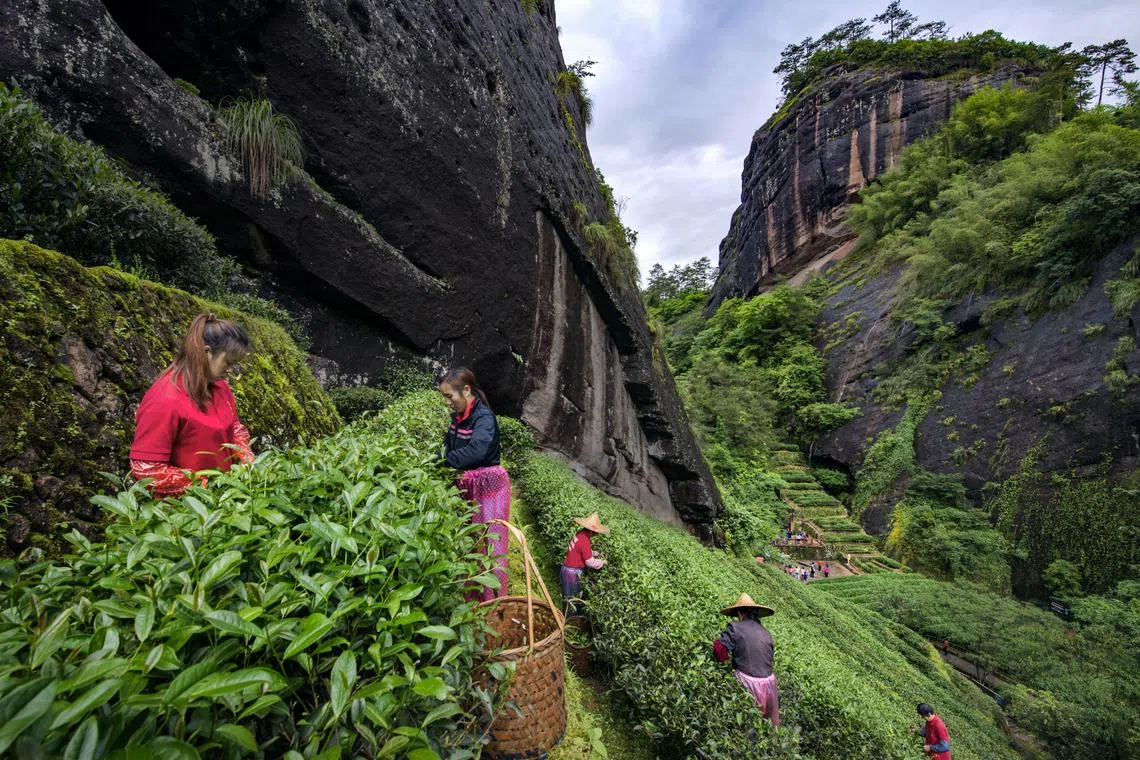
Tea pluckers picking tea leaves at a tea plantation on Mount Wuyi in southeastern China’s Fujian province.
PHOTO: ZHANG XIAOXI/MINISTRY OF CULTURE AND TOURISM, CHINA
China’s traditional tea processing techniques and associated social practices entail the knowledge, skills and practices around tea plantation management, tea-leaf picking, manual processing, drinking and sharing.
Based on natural conditions and local customs, tea producers have developed six categories of tea: green, yellow, dark, white, oolong and black teas. When added to reprocessed teas, such as flower-scented teas, the result is over 2,000 tea products with a variety of colours, aromas, flavours and shapes.
Tea is ubiquitous in the Chinese people’s daily life and is served steeped or boiled in homes, workplaces, tea houses, restaurants and temples. It is an important part of socialisation and of ceremonies such as weddings and sacrifices.
Talchum, mask dance drama (South Korea)
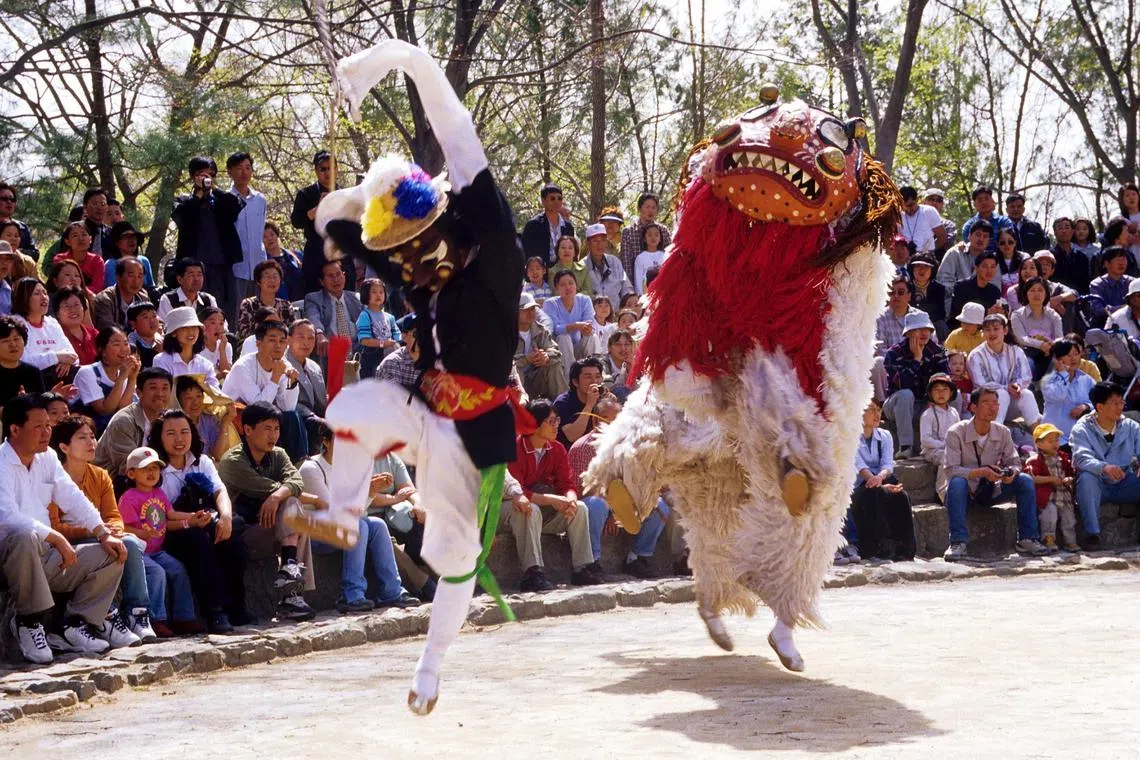
Lion dance at the Gangnyeong Talchum. At the start of the performance, the lion and the keeper dance together to purify the theatrical space.
PHOTO: IM WON-SOON/NATIONAL INTANGIBLE HERITAGE CENTRE, SOUTH KOREA
Talchum is a performing art that encompasses dance, music and theatre. An ensemble of six to ten musicians accompanies masked performers who humorously explore social issues through dramatic combinations of songs, dances, movements and dialogue.
The practice uses caricatures of everyday characters to convey its underlying appeal to universal equality and criticism of social hierarchy. Talchum performances do not require a formal stage: any empty space can become a venue. The audience plays an essential role, contributing to the production with their cheers and jeers as the drama unfolds.
This interaction with audiences and the focus on social criticism contributed to Talchum’s large-scale transmission in the 1970s and 1980s among young people, particularly university students. Initially performed by men, the practice now includes women.
Furyu-odori, ritual dances (Japan)

Performers shoulder large objects during the Shinji-odori, a type of the Furyu-odori ritual dances, at a shrine.
PHOTO: AGENCY FOR CULTURAL AFFAIRS, JAPAN
Furyu-odori in Japan refers to various ritual folk dances, characterised by eye-catching costumes and lively dances and music. These local dances have been performed for centuries, primarily in rural areas.
The dances are performed for many reasons, including to pray for the end of plagues, the repose of the deceased, a good harvest or safety from disasters. Each element, from the costumes to the music, is believed to dispel evil spirits and misfortune and to strengthen good forces, such as local deities and ancestral spirits, that protect the communities.
The performance of Furyu-odori is an occasion for community members who have moved to urban areas to return home. For instance, former Uonuma City residents who live in Tokyo travel back home to take part in the dance.
Pyongyang Raengmyon, North Korea

The Pyongyang Raengmyon.
PHOTO: RYU TOK IN/NORTH KOREA
Pyongyang Raengmyon (cold noodles made primarily from buckwheat) is a customary social and cultural dish in North Korea. It is served in a brass bowl and topped with trimmings of meat, Kimchi, vegetables, fruits and garnish. Cool meat stock or watery radish Kimchi juice is poured over the noodle strips to finish the preparation.
A traditional folk dish deeply rooted in the lives of Pyongyangites, it is associated with long life, happiness, hospitality, conviviality and friendliness, and is believed to foster respect, intimacy and unity.
A day before Jongwoldaeborum (a Korean folk winter holiday), family members and neighbours gather to enjoy the noodles, hoping their life will be as long as the noodle strips. At celebrations such as birthdays and weddings, Pyongyangites serve the dish with blessings for relatives, neighbours and friends. It is customary to have some liquor beforehand.
Pehlevanliq culture: Traditional zorkhana games, sports and wrestling (Azerbaijan)
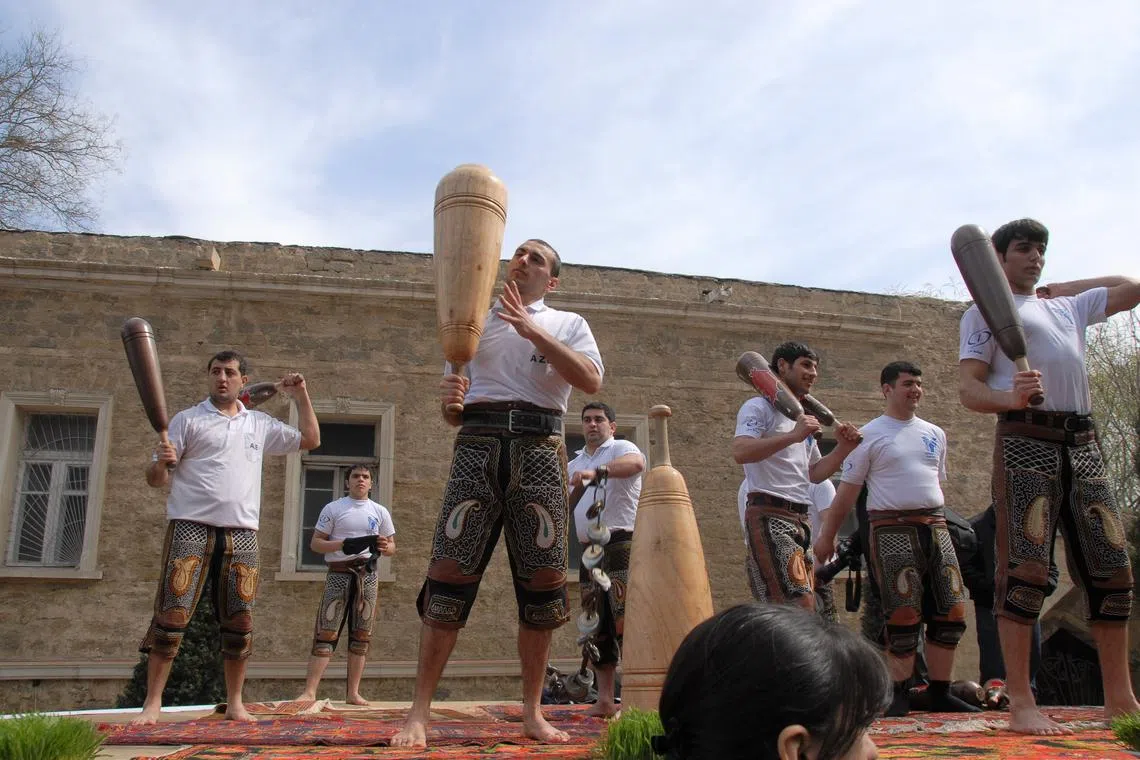
Pehlevanliq and zorkhana games.
PHOTO: MAMED RAHIMOV/MINISTRY OF CULTURE, AZERBAIJAN
Pehlevanliq culture in Azerbaijan includes games and sports, such as wrestling, and individual performances. Pehlevans use specific tools that resemble medieval weapons (such as swords, shields and bows), but are heavier (originally, to allow pehlevans to handle real weapons easily).
The competitions are overseen by referees and accompanied by music or fast-beating drums. The main practitioners of the element are the pehlevans, the men who practise, perform and transmit their knowledge and skills.
An integral part of popular culture, folk events and outdoor celebrations, Pehlevanliq culture provides a strong sense of identity to communities in Azerbaijan. For many years, pehlevans have been a symbol of determination, promoting social cohesion and providing a sense of pride and shared identity to local communities.
Baguette (France)
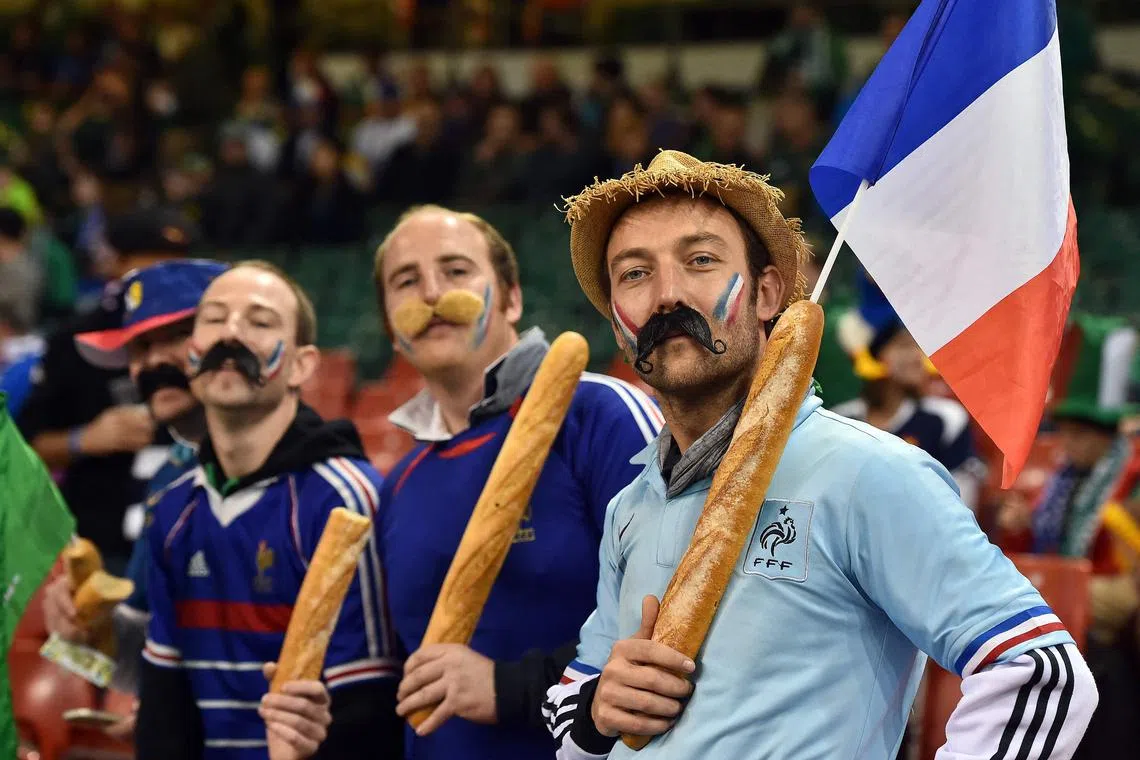
French rugby fans hold baguettes ahead of a 2015 Rugby World Cup between France and Ireland at the Millennium Stadium in Cardiff, Wales.
PHOTO: AFP
The bread, with its crusty exterior and soft middle, has remained a quintessential part of French life long after other stereotypes like berets and strings of garlic have fallen by the wayside. More than six billion are baked every year in France, according to the National Federation of French Bakeries.
The traditional production process entails weighing and mixing the ingredients, kneading, fermentation, dividing, relaxing, manually shaping, second fermentation, marking the dough with shallow cuts (the baker’s signature) and baking. Unlike other loaves, the baguette is made with only four ingredients (flour, water, salt and leaven and/or yeast) from which each baker obtains a unique product.
“It celebrates a whole culture: the daily ritual, a structural element of a meal, synonymous with sharing and conviviality,” said Unesco director-general Audrey Azoulay.
Modern dance (Germany)

Lecture and exemplary training demonstration about Modern Dance in Germany at a Folkwang Symposium.
PHOTO: CHRISTIAN CLARKE/DUSSELDORF
Modern Dance is a form of physical expression distinct from classical ballet. Rather than reproducing predetermined dance positions, the dancers seek a true-to-life expression that reflects emotions and life experiences.
The focus lies on solo pieces as well as on co-creation in small groups, and age, social status, origin, physical condition and gender play no role. A multifaceted practice of cultural activity and self-empowerment, modern dance creates a sense of community, strengthens human ties and is locally rooted.
From a social perspective, it is viewed as a source of social cohesion, promoting integration and inclusion, especially of disadvantaged groups, such as people with disabilities and older adults.
Alheda’a, oral traditions of calling camel flocks (Saudi Arabia, Oman and United Arab Emirates)
Alheda’a is an oral polyphonic expression accompanied by gestures or musical instruments played by herders to communicate with their camels.
The rhythmic expression is inspired by poetry, and the herder uses a unique repository of sounds that the camels have become accustomed to in order to direct herds through the desert or pasture to an area for drinking, feeding and milking preparation. Alheda’a can also be used for swift assembly in case of immediate danger such as sandstorms.
Herders train their camels to recognise the difference between right and left, to open their mouths when asked, and to kneel down to be ridden.
The practice creates a strong bond between the camels and their herders, as well as among the herders themselves. It is transmitted within families and communities, with children accompanying adult family members on daily trips.
Straw-weaving (Belarus)
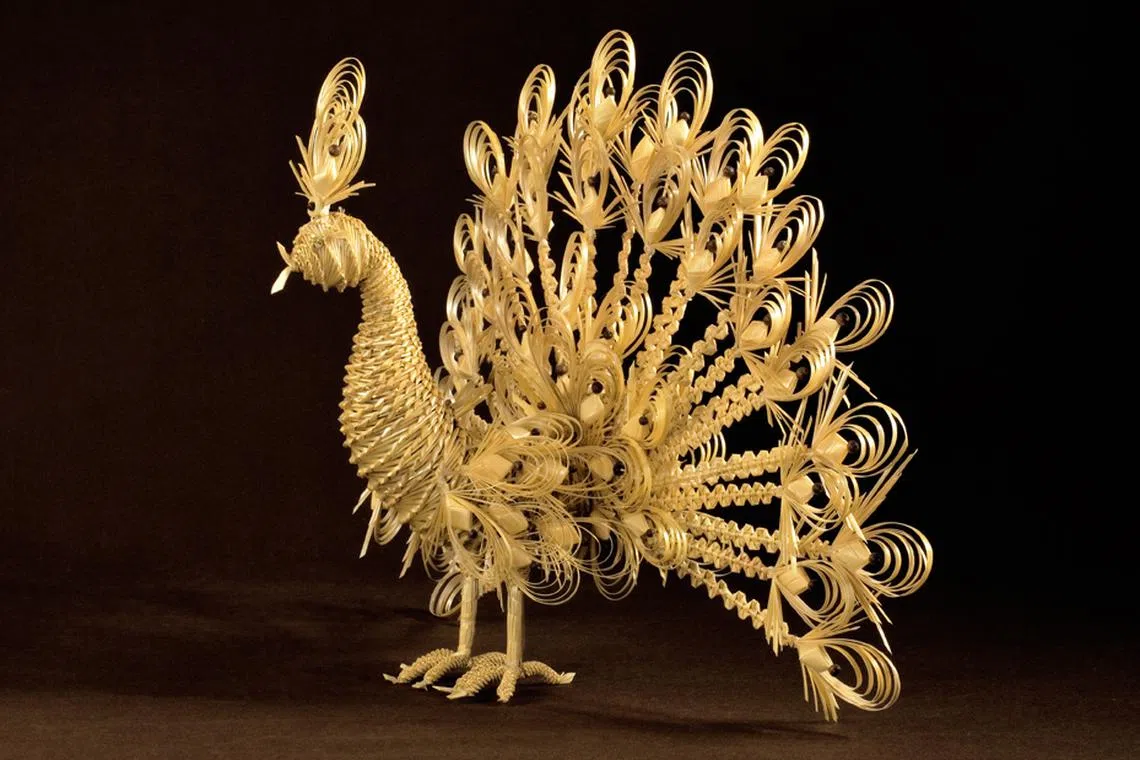
‘Firebird’ by master Alena Grin, Minsk.
PHOTO: LIKHTAROVICH
Belarusian straw weaving emphasises the spiritual value and symbolism of the material and the products.
Various utensils (such as boxes and baskets), headgear, toys and accessories are made from straw. Some products have special meaning, such as the harvest wreaths or pawuks, complex diamond-shaped structures believed to protect the household from evil and diseases.
Many experts inherited the knowledge and skills from their parents and grandparents. Some work as individual artisans, selling their straw products at fairs, festivals, exhibitions or traditional crafts boutiques, whereas others practise straw weaving as a hobby.
Beekeeping (Slovenia)

Urban beekeeping with hives on the roof of the Court of Audit of Slovenia.
In Slovenia, beekeeping is a way of life for many individuals, families and communities, who obtain bee products for food and traditional medicine and use their knowledge and skills to care for the honeybees and the environment. The only subspecies kept in Slovenia is the Carniolan bee.
Bees are kept mostly in wooden apiaries near beekeepers’ homes. Communities express a loving and respectful attitude towards bees, and the related knowledge, skills and practices are shaped by centuries of tradition and transmitted from generation to generation.
The importance of beekeeping in Slovenia is reflected in its rich terminology and in academic, literary and folklore texts (with printed works from the eighteenth century onwards disseminating knowledge, prose, poetry and sayings related to beekeeping), art (with the characteristic painted panels and religious and secular motifs on the hives) and architecture (with the construction of traditional apiaries).

